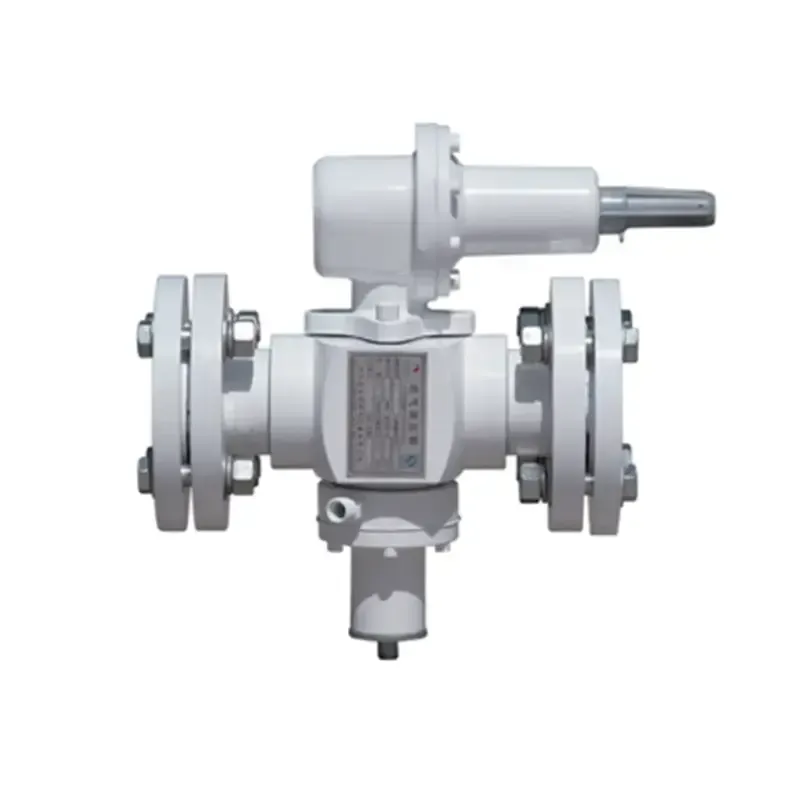
Nov . 21, 2024 17:53
Back to list
صمام التنفيس
The Importance of Pressure Relief Valves in Modern Engineering
Pressure relief valves (PRVs) are critical components in many industrial applications, playing an essential role in ensuring the safety and efficiency of various systems. These devices are designed to automatically release excess pressure from a system, preventing potential hazards such as explosions or equipment failures. Understanding their function, design, and maintenance is crucial for engineers and technicians involved in the operation of pressurized systems.
Understanding Pressure Relief Valves
At its core, a pressure relief valve is a mechanical device that opens at a predetermined pressure to allow fluid to escape, thus maintaining the pressure within the system at a safe level. When the internal pressure reaches a specified limit, the valve activates, releasing the excess pressure and ensuring that the system remains within operational parameters. This mechanism is vital in preventing catastrophic failures in equipment such as boilers, pressure vessels, and pipelines.
There are several types of pressure relief valves, including spring-loaded valves, pilot-operated valves, and balanced bellows valves. Each type has its unique application and advantages, depending on factors such as the nature of the fluid being handled, the pressure range, and the operating environment. For example, spring-loaded valves are widely used for their simplicity and reliability, while pilot-operated valves are preferred for high-pressure applications due to their precise control.
.
The paramount reason for integrating pressure relief valves into systems is safety. Without adequate pressure relief mechanisms, pressurized systems are at risk of experiencing overpressure scenarios that can lead to severe accidents. Historical incidents, such as industrial explosions and equipment ruptures, have highlighted the importance of effective pressure management. Regulatory bodies, such as the American Society of Mechanical Engineers (ASME) and the Occupational Safety and Health Administration (OSHA), set strict guidelines regarding the installation and maintenance of PRVs to ensure the safety of workers and the environment.
صمام التنفيس

Responsibility for ensuring proper functionality of pressure relief valves often falls on engineers and maintenance personnel. Regular inspections and testing are vital to confirm that these valves operate correctly and respond appropriately under pressure. A PRV that is stuck closed or has corroded can lead to disastrous consequences, emphasizing the need for routine maintenance schedules and rigorous compliance with safety standards.
Design Considerations
When designing a pressure relief valve system, engineers must consider several factors, including the type of fluid, temperature, and the range of operating pressures. The sizing of the PRV is crucial; it must be capable of handling the maximum expected flow rate while ensuring that the system can operate safely under normal conditions. Additionally, the integration of the valve into the overall system design requires careful analysis to minimize the risk of cavitation and to ensure that the valve can effectively vent excess pressure in a timely manner.
Materials selection is another critical aspect of PRV design. The valve must be resistant to the fluid it will encounter, as well as to the environmental conditions of the installation site. Corrosion-resistant materials are often employed for systems dealing with aggressive chemicals or high temperatures, while standard metals may suffice for less demanding applications.
Conclusion
In conclusion, pressure relief valves are integral to the safe operation of many industrial systems. Their ability to maintain pressure within safe limits protects both equipment and personnel from the dangers of overpressure. Engineers must prioritize the proper selection, design, and maintenance of these valves to uphold safety standards and ensure operational efficiency. As industries continue to evolve and face new challenges, the role of pressure relief valves will undoubtedly remain vital in safeguarding assets and lives. By investing in robust pressure management systems, organizations can enhance their reliability and sustainability in an increasingly competitive market.
Next:
Latest news
-
Safety Valve Spring-Loaded Design Overpressure ProtectionNewsJul.25,2025
-
Precision Voltage Regulator AC5 Accuracy Grade PerformanceNewsJul.25,2025
-
Natural Gas Pressure Regulating Skid Industrial Pipeline ApplicationsNewsJul.25,2025
-
Natural Gas Filter Stainless Steel Mesh Element DesignNewsJul.25,2025
-
Gas Pressure Regulator Valve Direct-Acting Spring-Loaded DesignNewsJul.25,2025
-
Decompression Equipment Multi-Stage Heat Exchange System DesignNewsJul.25,2025

